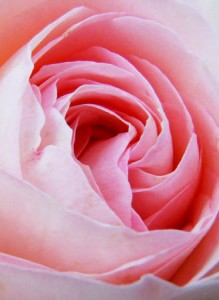
More evidence that low-calorie sweeteners are bad for your health
Studies show that artificial sweeteners can raise the risk of hypertension, metabolic syndrome, type 2 diabetes and heart disease, including stroke.

There is an old Persian saying: ‘Rose is the only thing you can take with you when you die because it’s not of this world.’
Roses are the source of an exquisite oil that has a delicate, uplifting fragrance and and a healing, rejuvenating effect on the skin.
The earliest known rose oil distillery existed in the year 1612 in Shiraz in what is now Turkey. Today Bulgaria, Morocco, Turkey, Russia and France with Bulgaria being are till the main producers of commercial roses.
What’s in a name?
Rose oil comes in two main types, rose absolute and rose otto. They are both used for the same purposes; the difference lies in how they are produced.
Rose absolute is produced by solvent extraction. This yields a reddish orange or olive green oil with a lighter floral scent, that many of us expect from a rose oil. It is much more viscous than rose otto and solidifies at cooler temperatures, so much so that you may need to warm it in your hands before use.
Rose otto sometimes called attar of roses, it has been used since ancient times. It is the more expensive of the two types of rose because it usually extracted by gentle steam distillation from Rosa damascena, the Damask Rose (occasionally Rosa centifolia, sometimes called Rose Maroc) and yields a sticky, pale yellow or olive green oil with a very rich, spicy floral scent.
One hundred percent pure rose otto will keep for as long as you need it, provided you keep it in a cool dark place.
Both types can be used in aromatherapy massage and although it is more expensive, rose otto is also extremely pungent. You will probably find that you need to use much less in a blend than is normal with other essential oils.
Rose water
Rose water is basically a by-product of rose oil through distillation of pure fresh rose petals. Rosewater possesses the sweet, delicate scent of the roses from which it is made. It is a natural mild antiseptic and is recommended for acne and skin irritation, for nourishing and hydrating the skin and face, and for nourishing the body after a shower or bath.
Rosewater can be used on its own as a soothing toner and cleanser or combined with other ingredients. It’s worth buying the best quality pure rose water you can find and ensuring that it has no added ingredients such as preservatives.
The rose plant also yields two other oils: rose leaf absolute, which is used purely for flavour and fragrance, and rosehip seed oil, which is effective in treating burns, scars and wrinkles, and promotes tissue regeneration.
Multiple benefits
Rose oil is traditionally used to calm and uplift. It is anti-inflammatory, cooling and soothing, and as such is beneficial for dry, hot, inflamed or itching skin and for many other inflammatory conditions, like conjunctivitis (although it would be rose water rather than the oil that is used for this).
In addition, rose is excellent for scarring, treating broken capillaries and for mature skin types. Rose’s cooling and soothing properties are excellent for treating stress related conditions in adults and children.
Rose oil has also been shown to have antimicrobial properties. In one laboratory study Damask rose demonstrated antibacterial activity against 15 strains of bacteria.
Stress and anxiety relief
In a 2009 study of 40 healthy volunteers, rose oil applied to the skin produced a relaxation response greater than that of a placebo oil. People who received rose oil also had a greater decrease in breathing rate and blood pressure than those who received the placebo.
In an earlier animal study, published in 2004, inhalation of rose oil was found to lower anxiety in a group of rats.
Menstrual cramps
Topically applied rose oil (combined with other oils) may also be effective in reducing menstrual cramps, according to a 2006 study of 67 female college students. In this study, a blend containing one drop of rose, two drops of lavender, one drop of clary sage, and 5 cc of almond oil was applied in form of an abdominal massage.
Menopausal symptoms
For a 2008 study of 52 menopausal women, researchers gave half the women to weekly massages with several essential oils (including lavender and jasmine oils in addition to rose and rose geranium oils) and half to no treatment. After 8 weeks, the women who received massage reported a significantly greater improvement in menopausal symptoms (such as hot flashes) than those who weren’t massaged.
Whether you use it for a specific health condition or whether you use it simply because you love the uplifting, ethereal and eternally romantic floral scent, rose is one of our most treasured essential oils.

Please subscribe me to your newsletter mailing list. I have read the
privacy statement